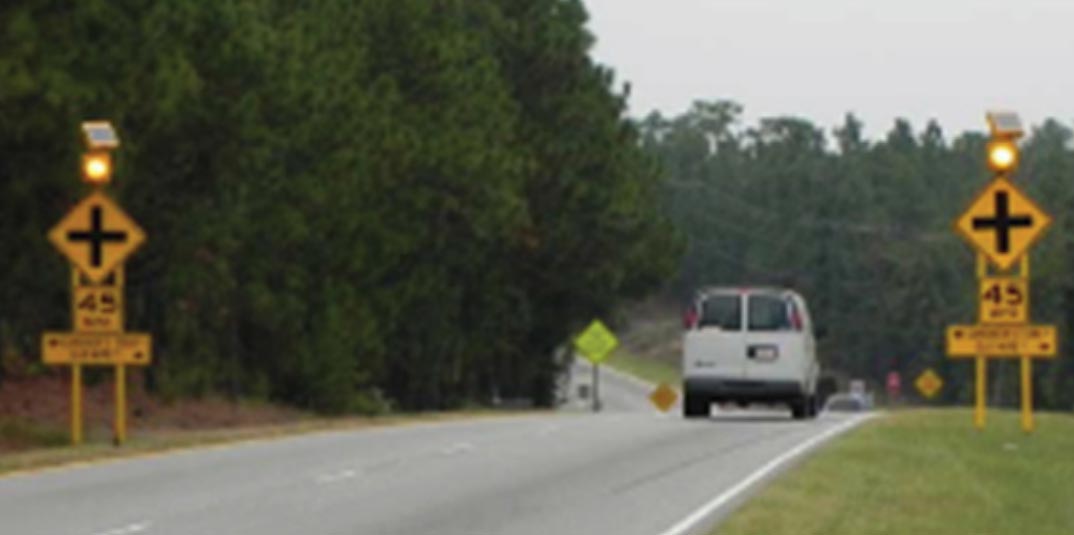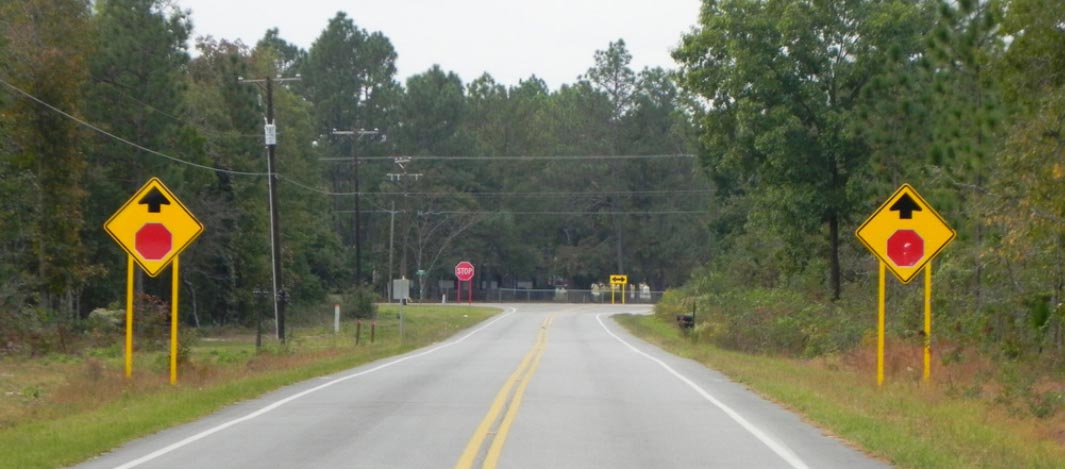U.S. Department of Transportation
Federal Highway Administration
1200 New Jersey Avenue, SE
Washington, DC 20590
202-366-4000
This systemic approach to intersection safety involves deploying a package of multiple low-cost countermeasures, including enhanced signing and pavement markings, at a large number of stop-controlled intersections within a jurisdiction. These countermeasures increase driver awareness and recognition of the intersections and potential conflicts.
There are several benefits to systemically applying multiple low-cost countermeasures at stop-controlled intersections, including,
The low-cost countermeasures for stop-controlled intersections generally consist of the following treatments:

Example of countermeasures on the through approach. Source: South Carolina DOT

Example of countermeasures on the stop approach. Source: South Carolina DOT
Sources
1. T. Le et al, "Safety Effects of Low-Cost Systemic Safety Improvements at Signalized and Stop-Controlled Intersections," 96th Annual Meeting of the Transportation Research Board, Paper Number 17-05379, January 2017.
Filter countermeasures by focus area, crash type, problem identified, and area type.
